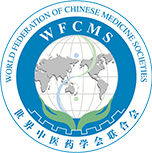Inhibitory interaction and pharmacological analyses of berries phenolics against Listeria monocytogenes virulent protein internalin B
Release time: Mar 6,2023
Reading volume: 674
Abstract :
Background: Traditional plants, their parts, and phytochemicals obtained from them are beneficial for human beings. They are used as potent antimicrobials, but very little research is conducted on the use of traditional medicine against food-borne infection. Different berry plants are rich in phenolic compounds and conventionally known to have many properties such as antioxidants, anti-carcinogenic, anti-inflammatory, anti-bacterial, and anti-diabetics. However, only limited polyphenols are known for their antilisterial effect. The present study aimed to explore the antimicrobial efficacy of phenolic compounds of berries for the treatment of food-borne infection caused by the bacteria Listeria monocytogenes. Materials and Methods: Molecular docking studies employing the SwissDOCK server were performed to evaluate the antimicrobial activity of phenolic compounds obtained from different varieties of berries. Internalin B (InlB), a virulence protein of L. monocytogenes was selected as a target. The absorption, distribution, metabolism, excretion, and toxicity profiling of each test ligand was done through the SwissADME tool. Results: Among all the test ligands, p-coumaric acid, epicatechins, chlorogenic acid, and quercetin showed better binding efficiency with the target protein InlB. The binding energy obtained for quercetin, p-coumaric acid, chlorogenic acid, and epicatechins was-8.93,-8.23,-8.18,-7.58, kcal/mol, respectively. Quercetin and p-coumaric acid were forming 4 H-bonds, whereas chlorogenic acid and epicatechins were forming 3-H bonds inside the binding pocket. Conclusion: In a nutshell, analyses indicated that identified ligands have the potential to block the virulent protein InlB of L. monocytogenes and help combat Listeria infection. These phenolic compounds could be a substitute for synthetic antimicrobials and can be used in food preservation and combat food-borne diseases. However, future in-depth in vitro and in vivo analysis is needed to get more information on these four phenolic ligands of berries.
Keywords: Berry plant, internalin B, Listeria monocytogenes, pharmacological analyses, phenolics, potent inhibitor, traditional medicine

